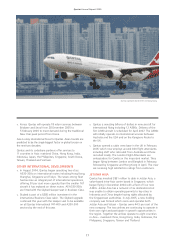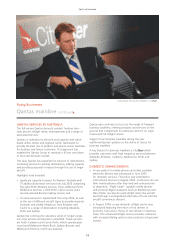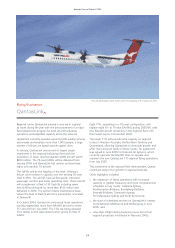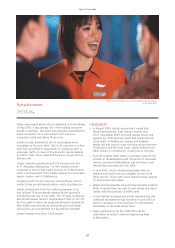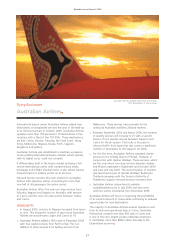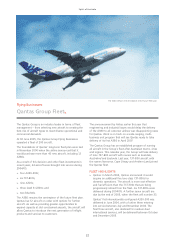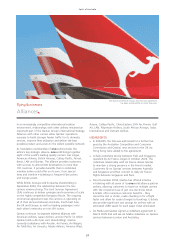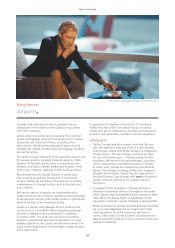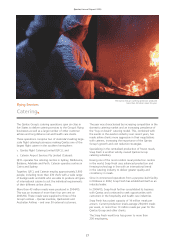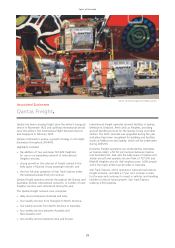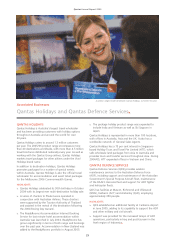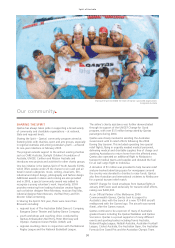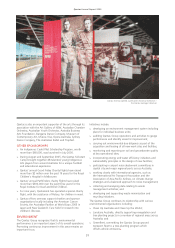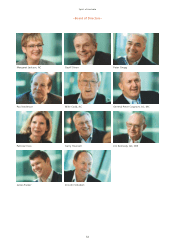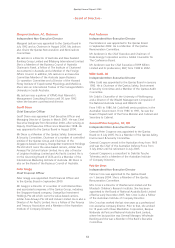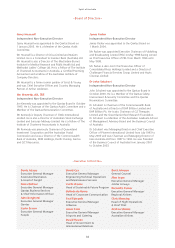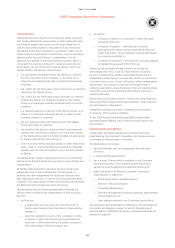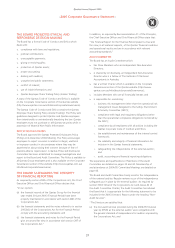Qantas 2005 Annual Report Download - page 29
Download and view the complete annual report
Please find page 29 of the 2005 Qantas annual report below. You can navigate through the pages in the report by either clicking on the pages listed below, or by using the keyword search tool below to find specific information within the annual report.
27
The Qantas Group’s catering operations span six cities in
five States to deliver catering services to the Group’s flying
businesses as well as a large number of other customer
airlines and long distance rail and health care clients.
These operations comprise two of Australia’s leading large-
scale flight catering businesses making Qantas one of the
largest flight caterer in the southern hemisphere:
x Qantas Flight Catering Limited (QFCL); and
x Caterair Airport Services Pty Limited (Caterair).
QFCL operates five catering centres in Sydney, Melbourne,
Brisbane, Adelaide and Perth. Caterair operates centres in
Cairns and Sydney.
Together, QFCL and Caterair employ approximately 3,900
people, including more than 230 chefs with a wide range
of backgrounds and skills who are able to produce all types
of international cuisine to suit the individual requirements
of their different airline clients.
More than 43 million meals were produced in 2004/05.
This was an increase of more than four per cent on
2003/04. These meals were supplied to three of the
Group’s airlines – Qantas mainline, QantasLink and
Australian Airlines – and over 30 external customers.
The year was characterised by increasing competition in the
domestic catering market and an increasing prevalence of
the “buy on board” catering model. This, combined with
the events in the aviation industry over recent years, has
made airline clients more aggressive in their negotiations
with caterers, increasing the importance of the Qantas
Group’s growth and cost reduction strategies.
Specialising in the centralised production of frozen meals,
Snap Fresh is another wholly-owned Qantas Group
catering subsidiary.
Having one of the most modern meal production centres
in the world, Snap Fresh uses advanced production and
freezing technology in line with an international trend
in the catering industry to deliver greater quality and
consistency in meals.
Since it commenced operations from a purpose-built facility
in Brisbane in 2002, Snap Fresh has established itself as an
industry leader.
In 2004/05, Snap Fresh further consolidated its business
with Qantas and continued to seek opportunities with
customers in the hospitality and health care industries.
Snap Fresh has a plant capacity of 14 million meals per
annum. Current production levels average 250,000 meals
per week, or more than 13 million meals per year for the
Qantas Group and other clients.
The Snap Fresh workforce has grown to more than
200 employeesx
Qantas Annual Report 2005
Flying Services
Cateringx
The Qantas Group’s catering operations produced
more than 43 million meals this year


